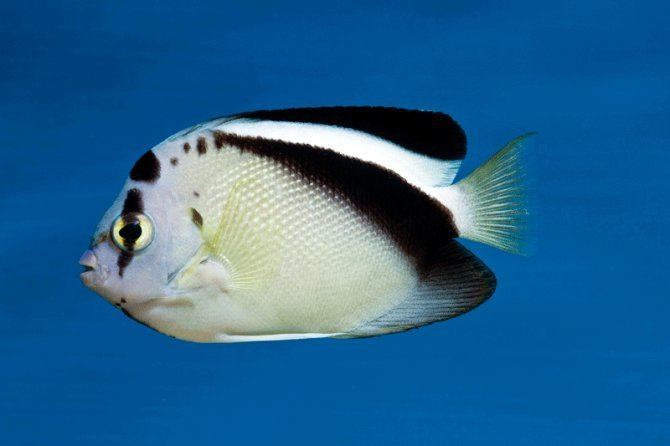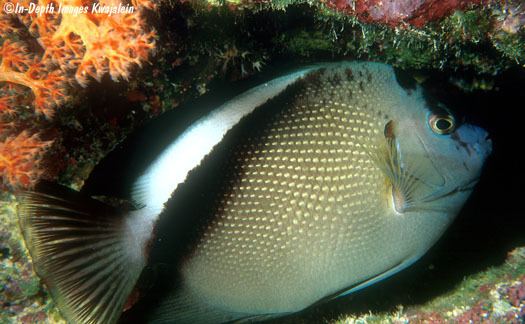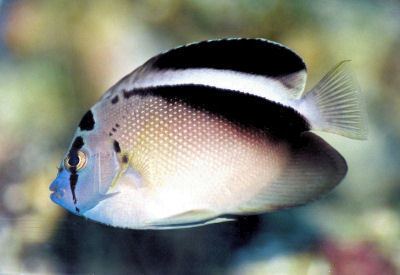Order Perciformes | Phylum Chordata Scientific name Apolemichthys griffisi Rank Species | |
 | ||
Similar Apolemichthys, Pomacanthidae, Apolemichthys xanthurus, Holacanthus africanus, Apolemichthys trimaculatus | ||
Reefwise griffis angelfish apolemichthys griffisi
The Griffis angelfish, Apolemichthys griffisi, is a species of marine angelfish from the Pacific Ocean. It is a rarity for the species to enter the aquarium trade.
Contents
- Reefwise griffis angelfish apolemichthys griffisi
- 3 apolemichthys griffisi griffis angelfish 20130503
- Description
- Habitat
- Diet
- Reproduction
- Lifespan
- Status
- In the Aquarium
- References

3 apolemichthys griffisi griffis angelfish 20130503
Description

An adult Griffis angelfish is an ashy white with a solid black band from the head to the lower side of the caudal peduncle, and has another contrasting white band running within the black. A quarter-sized black spot marks the back of the head, though finer black dots may also appear near the head. The dorsal fin is primarily black, while the anal and pelvic fins are white. Juvenile angelfish of this species have more contrasting colors and lack the smaller black dots.

Adult angels of this species can reach 9.8 inches in length. Sexual dimorphism is not found in this species, though it is suspected that males are slightly larger.
Habitat

This species frequents outer coral reefs, rocky ledges, and reef drop-offs between 33–361 feet below the surface. Scattered throughout the Pacific Ocean, the angels can be found anywhere from Southeast Asian coasts to the Line Islands in the Central Pacific. The Griffis are usually solitary fish, though they have been seen in pairs or small groups.
Diet
They have been observed feeding on sponges and tunicates, and it is theorized their diet also consists of weeds, benthic algae, and zoobenthos due to similar feeding habits within their genus.
Reproduction
Very little information is available for this species breeding habits as they have not been bred in any aquarium or laboratory. Generally, angelfish are broadcast spawners, in which males and females release eggs and sperm into the water column at dusk upon the females' signal and eggs are fertilized.
Lifespan
While the specific lifespan of this angelfish is unknown, the average lifespan of angelfish is 10–15 years.
Status
Griffis angelfish are charted on the IUCN Red List as Least Concern due to the generally large population across a wide range of the Pacific. There are no major identified major threats.
In the Aquarium
The species is generally considered a moderately difficult fish to keep and recommended for experienced aquarists. The true difficulty comes when looking for a healthy specimen, as the fish is rarely seen in the aquarium trade.
While considered moderately hardy, this angelfish thrives in pristine water conditions and requires a minimum tank size of 100 gallons. If the aquarist desires to keep more than one specimen or multiple species of angel fish, the tank should be over 150 gallons and specimens should be introduced at the same time. This particular angel requires lots of open space for free swimming and a moderate amount of live rock to serve as a hiding place. High quality sponge foods are required to entice the angel to eat, and should be supplemented with algae sheets and occasional treats of meaty foods. It is best to feed this angel small amounts several times a day. It is not a reef safe fish, and will consume corals, invertebrates, etc.
